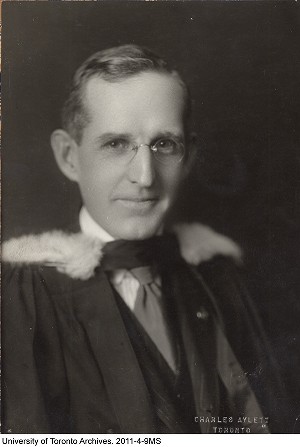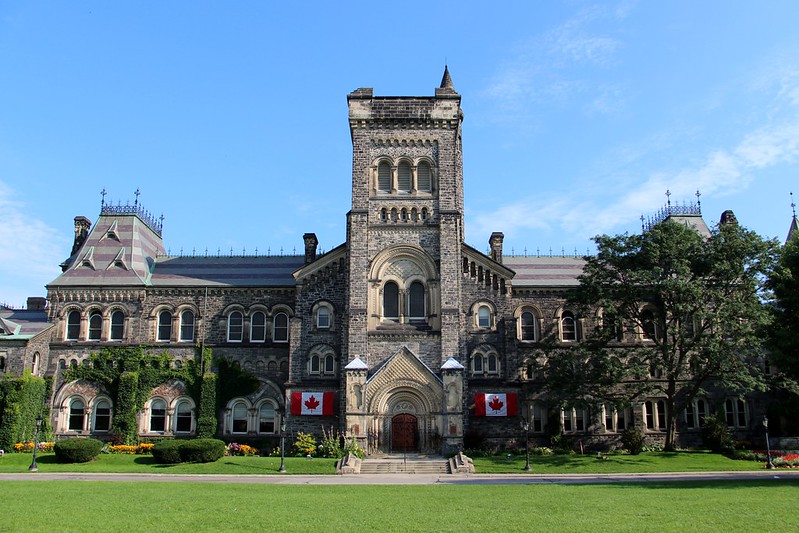John Gerald FitzGerald, FRSC, bacteriologist, pathologist, public health reformer and author (born 9 December 1882 in Drayton, ON; died 20 June 1940 in Toronto, ON). Known as “Canada’s public health visionary,” Dr. John FitzGerald was the founder of the Connaught Antitoxin Laboratories and a major contributor to Canada’s modern public health system (see Sanofi Pasteur Limited). He manufactured the first safe, effective Canadian-made diphtheria antitoxin and rabies vaccines. His work led to the control and eradication of numerous deadly infectious diseases in Canada.

Early Life and Education
John G. FitzGerald was the eldest of four children born to pharmacist William FitzGerald and Alice Ann (née Woollatt). In 1891, the family moved to Harriston, Ontario, where FitzGerald attended Harriston High School and worked in his father’s apothecary shop. He enjoyed chemistry and books about medical pioneers such as Louis Pasteur. In September 1899, FitzGerald began studies in the faculty of medicine at the University of Toronto. At age 16, he was the youngest student in the medical school’s history. He graduated from the University of Toronto in 1903.
Possibly because his family had a history of mental illness, FitzGerald interned at Toronto’s Neurological Hospital and the Buffalo State Asylum for the Insane in New York. At The Johns Hopkins Hospital, an elite teaching hospital in Baltimore, Maryland, FitzGerald was influenced by Dr. William Henry Welch. At the Sheppard and Enoch Pratt Hospital in Baltimore, he became a colleague of Dr. Clarence B. Farrar. These doctors were leading men in the field of psychiatry.
A New Direction
In 1907, Dr. Charles K. Clarke, superintendent of Toronto’s Hospital for the Insane, appointed John G. FitzGerald as the institution’s first pathologist and clinical director. FitzGerald also taught psychiatry to medical students at the University of Toronto. In 1908, FitzGerald did research at Harvard Medical School in Boston and at the Danvers State Hospital. Around that time, perhaps affected by his mother’s death and the highly publicized case of Mary Mallon, the Irish-born New York woman known as “Typhoid Mary,” FitzGerald turned from psychiatry to the emerging study of bacteriology. He returned to the University of Toronto to lecture on the subject in 1909. In 1910, FitzGerald married heiress Edna Ella May Leonard, granddaughter of industrialist Elijah Leonard.
In 1911, FitzGerald accepted a position as an associate professor of bacteriology at the University of California at Berkeley. Over the next three years he spent his summers travelling to enhance his training in bacteriology and pathology and establish connections with leading international scientists. Most significant was the time he spent at the Pasteur Institutes in Brussels and Paris, where he met Nobel Prize-winner Jules Bordet, Louis Pasteur’s principal collaborator Émile Roux, and father of immunology Élie Metchnikoff. FitzGerald learned to make the smallpox vaccine, an antitoxin for diphtheria and Pasteur’s rabies vaccine. He spent time at the University of Freiburg in Germany and the Lister Institute of Preventive Medicine in London. He worked for the New York City Department of Health, along with Dr. William H. Park, America’s leading authority on diphtheria.
Founding Connaught Laboratories
In 1913, John G. FitzGerald was appointed associate professor in the department of hygiene at the University of Toronto and assisted in the production of the first rabies vaccine in Canada. At the time, thousands of Canadians were dying each year from infectious diseases. Diphtheria (a bacterial infection) killed 36,000 children in Ontario alone between 1880 and 1929. In Canada, there was no effective treatment for such illnesses. Antitoxins, serums and vaccines were made in the United States and prohibitively expensive. FitzGerald went to the University of Toronto’s board of governors with a proposal to set up a laboratory where high-quality preventive medications could be manufactured at low cost and distributed for free to patients in need. The idea of providing people with free medicine was considered radical at the time.
Using money borrowed from his wife’s inheritance and without waiting for the university’s approval, FitzGerald established a laboratory in a small stable in Toronto. He used horses to produce antibodies for the first Canadian-made diphtheria antitoxin at a fraction of the cost of the American product. Impressed by FitzGerald’s success, the university approved his plan for a self-sustaining laboratory dedicated to public service in collaboration with boards of health. It was named the Connaught Antitoxin Laboratories in honour of the Duke of Connaught, the Governor General of Canada. This was an important step in the evolution of Canada’s modern, publicly funded health care system. (See also Sanofi Pasteur Limited.)
First World War
Soon after the outbreak of the First World War in 1914, the Canadian government realized the need to vaccinate soldiers against tetanus. John G. FitzGerald was tasked with developing a vaccine at a lower cost than the one available from the United States. Assisted by philanthropist Sir Albert Edward Gooderham, who donated land, buildings and money, Connaught Laboratories’ vaccine-production facilities were greatly expanded. They were soon producing affordably priced vaccines, serums and antitoxins for tetanus, diphtheria, smallpox, typhoid, rabies and meningitis. FitzGerald joined the Canadian Army Medical Corps and had the rank of major. He served at a military training camp at Niagara and then with the British Royal Army Medical Corps on the Western Front as commander of a mobile pathology laboratory. By war’s end in 1918, Connaught Laboratories was producing one-fifth of all serums used by the British army, and the number of soldiers dying from disease had been radically reduced.
Post-War Career
After the war, John G. FitzGerald returned to teaching at the University of Toronto and to his position as the director of Connaught Laboratories. In 1920, he was appointed to the Dominion Council of Health. In 1921, FitzGerald and Connaught Laboratories assisted Frederick Banting, Charles Best and James Macleod in their discovery of insulin. In 1923, FitzGerald was made a member of The Rockefeller Foundation’s International Health Board. In 1927, he became the first director of the University of Toronto’s new School of Hygiene. He was appointed dean of the University of Toronto Medical School in 1932. FitzGerald was also a member of the Health Committee of the League of Nations. (See also Canada and the League of Nations.)
Publications
In 1922, John G. FitzGerald authored a textbook, An Introduction to the Practice of Preventive Medicine. During his career, he also wrote and co-authored nearly 90 articles, pamphlets and scientific papers.
Final Years and Death
For years, John G. FitzGerald endured depression, migraine headaches, a bleeding ulcer and insomnia. In 1938, he suffered a mental breakdown and an attempted suicide, leading to his admission to the Neuropsychiatric Institute of the Hartford Retreat in Connecticut in 1939. He returned to work in 1940 but suffered a relapse and took his own life.
Honours and Awards
John G. FitzGerald was elected a Fellow of the Royal Society of Canada in 1920. He was posthumously inducted into the Canadian Medical Hall of Fame in 2004.

 Share on Facebook
Share on Facebook Share on X
Share on X Share by Email
Share by Email Share on Google Classroom
Share on Google Classroom










